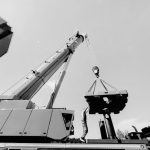
Different Crane Booms
In the world of construction and heavy lifting, cranes play a pivotal role in moving materials and equipment. At the heart of these engineering marvels is the crane boom, an essential component that determines the crane’s functionality and versatility. The crane boom is the extendable arm, visible from afar, designed to lift and maneuver heavy loads. Its design and type significantly affect the crane’s performance, suitability for specific jobs, and overall efficiency on a project. Let’s delve into the different types of crane booms and their applications.
1. Telescopic Boom
Telescopic booms are known for their adaptability. Comprising several tubes nested inside one another, these booms can extend or retract, adjusting their length as required. This feature makes telescopic booms highly valued in mobile cranes, where flexibility and ease of transport are crucial. Whether it’s reaching across distances or lifting loads to significant heights, telescopic booms offer the precision and versatility needed for a wide range of tasks. – Mighty Cranes fleet includes cranes with telescopic booms including the Franna, Demag AC55Ton and Kato KR22H 22-TON
2. Lattice Boom
The lattice boom, with its distinctive crisscrossed steel members, combines lightweight construction with the ability to lift heavy loads over extended spans. Though requiring assembly on site, which might not be as quick as extending a telescopic boom, the lattice design provides strength and stability for demanding lifting operations. Used in both mobile and tower cranes, lattice booms are ideal for projects where high lifting capacity and reach are paramount.
3. Fixed Boom
As the name suggests, fixed booms do not offer the flexibility of adjusting their length. What they lack in versatility, they make up for in simplicity and reliability. Fixed booms are perfectly suited for applications where the lifting requirements are consistent, and the operational reach does not need to be altered. This type of boom is often found in scenarios where efficiency and speed are required for repetitive tasks.
4. Articulated Boom
The articulated boom stands out for its ability to bend thanks to multiple sections connected by joints. This unique feature allows for maneuvering loads around obstacles and lifting in tight spaces, making articulated booms the go-to choice for loader cranes and similar applications. The flexibility and precision of articulated booms make them indispensable in complex construction environments and projects with limited access.
The crane boom is more than just a part of the crane; it’s the element that brings versatility, reach, and precision to lifting operations. From the adjustable reach of telescopic booms to the robust lifting capacity of lattice booms, the choice of boom impacts the crane’s applicability to different projects. Whether it’s navigating the confines of a tight construction site with an articulated boom or performing consistent lifts with a fixed boom, understanding the types of crane booms and their applications is essential for selecting the right crane for the job.




